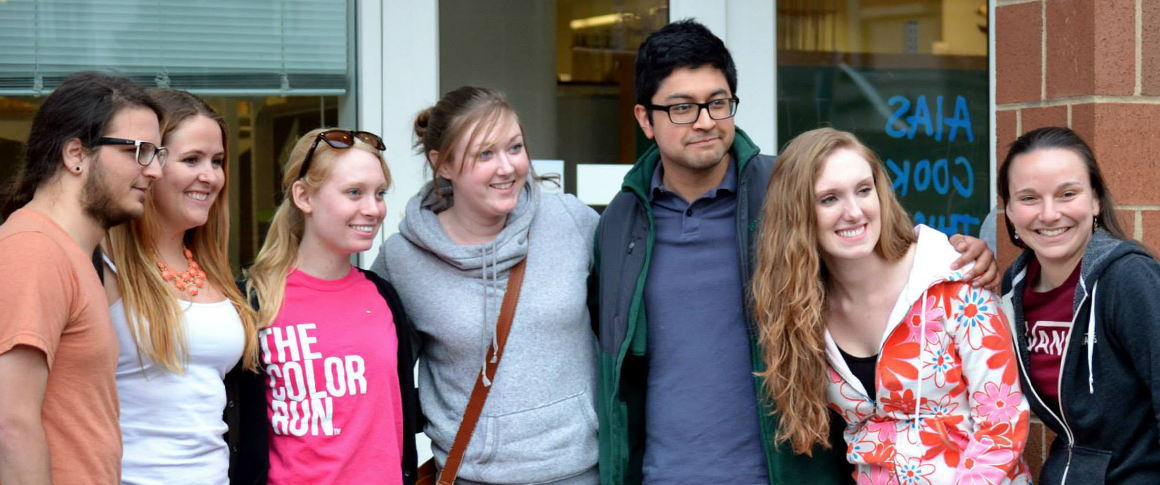The opinions expressed in this commentary are solely those of the author and do not necessarily reflect those of the National Council of Architectural Registration Boards (NCARB).
As an architecture student, you have the power to influence the profession. The power to voice your opinion, challenge the status quo, and take charge of your career—and have some fun along the way.
The American Institute of Architecture Students (AIAS), as it exists today, has undergone many changes since its founding almost 60 years ago. This has a lot to do with the fact that our membership inherently turns over every four years or so, as students graduate and new students begin their education. Many initiatives and ideas have come and gone. But many threads of continuity have carried throughout that time, and these are what define this organization: Fellowship, scholarship, mentorship, and leadership.
Fellowship
For those entering college for the first time—embarking on a vastly unknown path, not only in architecture, but also independence from the comforts of home—we provide a peer group. A local and national collective of like-minded individuals, engaging in the same struggles. Through partnership with organizations like NCARB and the National Architectural Accrediting Board (NAAB), we serve as a source of information for students embarking on a path they may not fully understand at the outset.
Scholarship
In a field so broad, yet at the same time mired in such infinite detail and precision, we provide the opportunities to enhance the education delivered by schools. No two students learn the same way, and what may come easily to one may be profoundly challenging to another. The AIAS is a resource not only for supplemental education through workshops, tutorials, and now digital resources, but also for collaborative learning opportunities, peer critiques, and mutual support.
Mentorship
Our organization was formed out of the American Institute of Architects (AIA), only officially establishing independence in the 80s. While we have grown immensely from the opportunities provided by our independence, we have never lost our deep ties with the profession. By virtue of our well-respected leadership and the constituencies they speak for, we provide connections to an almost endless network of professionals working in every sphere of architectural practice, education, and regulation, as well as those practicing in fields well beyond the traditional scope of architecture. The AIAS also provides opportunities for students to serve as mentors to each other, with positions such as the AIAS-appointed architect licensing advisors, who help their peers navigate the path to practice.
Leadership
Finally, the AIAS provides leadership. Any student graduating alongside a member of the AIAS may be equally qualified to work in the profession, but an AIAS member is qualified to lead the profession. By voluntarily taking on an active role, whether within a chapter or in the national organization, our members demonstrate a willingness to go beyond the bare minimum, to excel and challenge themselves to do more and be more. These are qualities that prove immediately and increasingly valuable as we embark on our careers, wherever they may lead.
And this is the single greatest value of the AIAS. The leadership born in the crucible of academia, while balancing the imposed requirements of studio with a voluntary engagement in a larger organization, is what commands respect and attentiveness from the profession. This is why we can rebel, voice dissent, and criticize the status quo, as our founders did 60 years ago. It states unequivocally to those now in leadership that we are prepared to inherit the practices they’ve built, not by quietly toeing the line and doing as we’re told, but by constantly questioning and challenging ourselves and others to do better.
Improvement
This particular brand of leadership, built on a constant drive to improve, is more important now than ever before. Our profession is a massively complex machine, and many deeply rooted practices are in critical need of re-examination. Our fresh perspectives, unbiased by accepted practices, are of crucial value in fixing the things that are no longer effective, and improving the things that are. This doesn’t mean we need to be arrogant, or petulant, or unflinchingly demanding. But it does mean that we need to state our questions boldly and confidently, without fear of offending our respected mentors.
We learn by questioning why things are done the way they are, and we charge those answering not to tell us, but to convince us. Often, the answer may simply need to be explained differently to be understood. But other times, there will be no deeper answer than, “Because it’s always been done that way.” When you hear that answer, your response should always be, “That isn’t good enough.”
Some practitioners that students will encounter in their early career may label the emerging generation as “entitled.” They’re right, but for all the wrong reasons. We are entitled to open and universal access to information and knowledge. We are entitled to equity regardless of gender, race, religion, or socioeconomic background. We are entitled to design that is always in the public interest, and to practice that is sustainable, not only environmentally, but economically, and socially.
We have access to, and mastery of, things that were simply not available even a decade ago. We are highly adaptable. We not only tolerate, but expect to be learning some new platform, tool, or technique every year. We refuse to accept that our profession should be cynical, because we know that we can save the world, and do so without choosing between martyrdom and a stable paycheck.
For almost 60 years, the AIAS has championed progressive thinking in the architecture and design profession, and has developed the leadership skills of tens of thousands of young professionals who’ve gone on to change the way we practice. As our profession grows into this new era, abounding in technological, social, and environmental opportunities, members of the AIAS play an integral role in guiding it toward having a positive impact.
